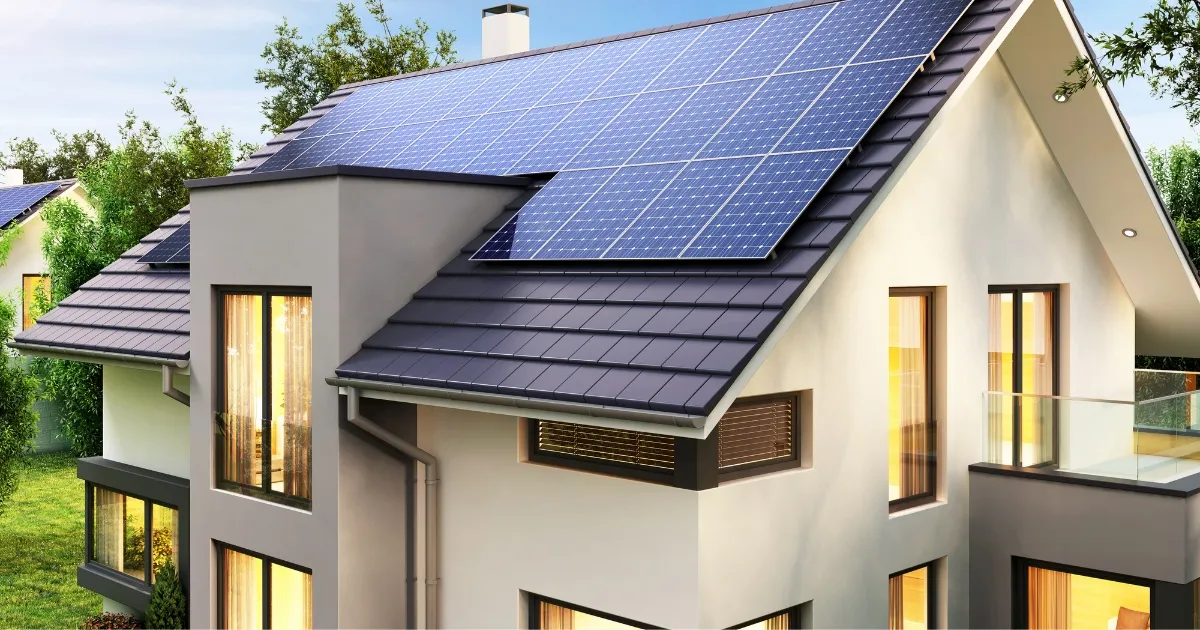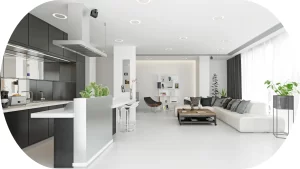Passive House Design: 7 Powerful Tips to Build a Cozy Net-Zero Home
By Mz Chaker & EAGC │September 03, 2025
Discover seven (7) essential Passive House Design strategies to create a cozy, energy-efficient, and net-zero home that prioritizes comfort and sustainability.

Introduction — The Future of Comfortable, Sustainable Living
Imagine a home that wraps you in warmth during winter and stays refreshingly cool through summer—all without relying on a power-hungry HVAC system. A home that practically erases your energy bills and supports a healthier planet, while offering unmatched indoor comfort and air quality. That isn’t a futuristic fantasy—it’s the reality made possible by Passive House Design.
Rooted in science and driven by performance, Passive House (or Passivhaus) is an internationally recognized building standard. It focuses on ultra-low energy use, thermal comfort, and healthier living spaces—all achieved through smart design and efficient materials rather than mechanical systems. Unlike traditional standards that rely on prescriptive rules, Passive House is performance-based and fine-tuned for real-world results.
But what about Net-Zero homes? These homes generate as much energy as they consume annually, usually by pairing Passive House efficiency with Green Energy solutions like solar PV or wind. Indeed, Passive House principles form the foundation for achieving a true Net-Zero lifestyle.
In this guide, we’ll unpack seven powerful, practical tips to help you create a cozy, healthy, and high-performance Net-Zero home—one that’s built to thrive in the decades to come.
These aren’t theoretical concepts—they’re proven strategies used in over 60,000 buildings worldwide as of 2016, with current estimates reaching over 120,000 structures, from Arctic communities to tropical climates.
Seven (7) Powerful strategies for a Cozy Net-Zero Passive House
Before diving into the technical aspects, it’s important to remember that each of these seven strategies contributes to a seamless system of enhanced comfort, Energy Efficiency, and long-term value. These aren’t isolated upgrades—they work best when integrated holistically into the building design from the outset.
1. Optimize Site Orientation & Leverage Passive Solar Design
Sunlight is free—so why not use it to your home’s full advantage? Passive solar design is the art of positioning and shaping your home to harness natural light and warmth, rather than fighting against it. By working in harmony with the sun, your home can stay warm in winter, cool in summer, and filled with daylight—all while reducing energy use. Here’s how to do it right:
- Face living areas south (in the Northern Hemisphere) to capture the low-angle winter sun, maximizing heat gain during colder months. This orientation is foundational in Passive Solar Design, as it leverages the natural path of the sun to warm the home without mechanical input.
- Design roof overhangs or exterior shading calibrated to the local sun angle. These architectural elements prevent overheating in summer while still allowing sunlight in winter. Tools like sun path diagrams or software such as SketchUp with solar analysis plug-ins help designers tailor overhangs precisely to the location.
- Limit west-facing windows, which are highly susceptible to heat gain in the afternoon. If unavoidable, consider low-SHGC (solar heat gain coefficient) glazing, external louvers, or deciduous tree shading to mitigate thermal spikes.
- Utilize thermal mass materials, such as concrete, tile, or stone, to absorb solar energy during the day and gradually radiate it back at night. Homes that integrate thermal mass can reduce peak heating loads by 25–30% in climates with wide daily temperature fluctuations (basc.pnnl.gov).

For instance, the BioLiving Research station in Germany showcases masterful passive solar integration. This research facility produces 200% of its energy needs through optimized orientation and solar design, all grounded in Sustainable Architecture principles. As a result, the building remains comfortable year-round with minimal use of mechanical systems.


A well-designed home doesn’t just stand on the land—it responds to it.

2. Embrace Super-Insulation for Unmatched Thermal Comfort
Insulation isn’t just about staying warm—it’s about creating a stable, comfortable climate inside your home year-round. In Passive House Design, super-insulation is a cornerstone principle. It goes far beyond typical building codes, using thick, high-performance layers in walls, floors, and roofs to reduce heat loss and gain dramatically. Here’s what you gain by upgrading insulation:
- Consistent indoor temperature with no cold corners or hot zones, creating stable thermal comfort year-round, even in extreme climates
- Drastically lower energy use, particularly in heating and cooling, super-insulated homes can cut thermal losses by up to 80%, according to the Passive House Institute.
- Enhanced soundproofing from dense insulation materials like cellulose or mineral wool significantly reduces external noise and improves indoor serenity.
In Passive House projects, wall insulation levels often exceed R-40, with roof insulation reaching R-60 or more, depending on the climate. Builders use continuous insulation and minimize thermal bridges to create a high-performance thermal envelope (U.S. Department of Energy).
According to the U.S. Department of Energy, improving insulation in existing homes can reduce heating and cooling costs by up to 20% (DOE, 2023). For new construction that meets or exceeds Passive House insulation standards, energy savings can reach as high as 80–90%, especially in cold climates, Passive House Institute.
Case in point: A Passive House in cold-climate Vermont slashed heating costs significantly compared to similar code-built homes (houzz.com)—thanks primarily to super-insulation. This aligns with findings from the Passive House Institute U.S., which cites heating energy reductions of up to 90% in certified Passive House projects.
To sum up: Going beyond minimum code is non-negotiable. You can’t achieve true comfort or efficiency without a robust thermal envelope.

3. Achieve Meticulous Air Tightness
Realistically, drafts are more than just a nuisance—they are hidden culprits of energy waste. In Passive House Design, maintaining a tight, uninterrupted building envelope is a critical element for achieving efficiency.
Air-tightness refers to the meticulous sealing of every joint, seam, and penetration in the building shell. That is by using advanced membranes, air-sealing tapes, gaskets, and precision craftsmanship. The goal is to prevent heated indoor air from escaping during winter and to block humid or polluted air from entering in summer. When done right, air-tightness brings measurable benefits:
- No cold spots, drafts, or uncomfortable indoor climates—thanks to minimized air infiltration and stable internal conditions, even in extreme weather;
- Significant energy savings—according to PHIUS, certified Passive Houses can consume up to 85% less energy for heating and cooling compared to conventional code-built homes, due to their airtight construction, super-insulation, and high-efficiency ventilation systems.
- Improved moisture control, which lowers mold risks and increases building durability, is significant in high-humidity or cold-climate regions where condensation and thermal bridging are common challenges.
The industry benchmark is the blower door test, which pressurizes the house to detect leaks. Passive House-certified buildings must meet a stringent 0.6 ACH50 or less. For context, typical new homes in North America average 3–5 ACH50 (PHIUS, 2023).



4. Invest in High-Performance Glazing (Windows & Doors)
Windows are where beauty meets performance in a Passive House Design. However, standard double-pane windows, while common, fall short of the performance benchmarks required for Passive House certification. To achieve both energy-efficiency and thermal comfort, Passive Houses use:
- Triple-glazed windows, with argon or krypton gas fills, offering low conductivity and high insulation value even in freezing conditions.
- Warm-edge insulated frames and spacers, designed to minimize thermal bridging and improve overall window U-values
- Low-emissivity (low-E) coatings that reflect infrared heat, reducing indoor heat loss in winter and solar gain in summer
- Tilt-and-turn functionality, popular in European Passive Houses, ensures enhanced air sealing, security, and ease of ventilation when needed.
These components work together to deliver:
- Superior insulation and draft-free performance even during extreme temperature swings. Triple-glazed units with argon or krypton gas can achieve U-values as low as 0.14 BTU/hr·ft²·°F (≈0.8 W/m²K), significantly outperforming typical double-pane windows that average around 0.30 BTU/hr·ft²·°F (≈1.7 W/m²K). (Efficient Windows Collaborative).
- Reduced condensation enhances both window durability and interior health. By keeping interior glass surfaces warmer, high-performance glazing helps maintain indoor relative humidity while preventing mold growth and damage to finishes. (Lawrence Berkeley National Laboratory).
- Excellent acoustic control, reducing noise by up to 40–50 dB, depending on configuration. These windows are therefore ideal for homes located in urban, airport, or high-traffic areas, and considerably improve the quality of life (Cristal Windows).



Bottom line: Investing in high-quality windows and doors isn’t just about saving energy—it’s about creating a serene, light-filled indoor experience that feels good year-round and works in harmony with your home’s entire performance strategy.
5. Implement Balanced Ventilation with Heat Recovery Ventilation Systems
In an ultra-sealed Passive House Design, one might wonder: Where does the fresh air come from?
That’s where Heat Recovery Ventilation (HRV) and Energy Recovery Ventilation (ERV) systems step in. These smart technologies ensure a continuous supply of clean, filtered air without sacrificing energy efficiency or comfort. They remove stale indoor air from bathrooms and kitchens, then bring in oxygen-rich outdoor air to living areas and bedrooms, all while capturing up to 90% of the heat from the outgoing air res.aecdaily.com; zehnderamerica.com.
ERVs go even further by balancing humidity, a valuable asset in both hot and cold climates.
Why this matters:
- Consistent indoor air quality with fewer allergens, pollutants, and CO₂ build-up;
- Energy recovery rates of 60–90%, preserving warmth in winter and coolness in summer zehnderamerica.com;
- Lower humidity extremes, which help prevent mold and moisture damage;
- Reduced need for open windows, keeping noise and outside pollution at bay;
📊 According to the CCHRC, HRV systems can recover up to 90% of heating or cooling energy that would otherwise be lost.
🧪 A study published in Building and Environment confirmed that Passive Houses using ERVs maintained significantly lower CO₂ levels and improved thermal comfort compared to those relying on natural ventilation, even in dense cities.
🔍 Myth Buster: Airtight homes are not stuffy. Indeed, they often outperform traditional homes in indoor air quality when paired with a well-designed ventilation system.
In summary, ventilation in a Passive House is far more than a regulatory necessity—it’s a critical strategy for ensuring occupant health, year-round thermal comfort, and optimal energy performance.
6. Integrate Renewable Energy Systems for Net-Zero Performance
Once your home is sealed, insulated, and optimized, it’s time to take it to the next level: generate your energy.
By incorporating renewable energy technologies, you elevate your Passive House from ultra-efficient to Net-Zero—or even net-positive. The combination of minimal energy demand and on-site generation creates a powerful synergy.
Here are the most effective Green Energy solutions:
- Solar photovoltaic (PV) panels – These are the most common on-site renewable energy systems used in Passive House and Net-Zero homes. They convert sunlight into electricity, which can dramatically reduce energy bills. According to the U.S. Department of Energy, PV panels have dropped in price by 70% since 2010 and now pay for themselves in under 10 years in many regions (DOE).
- Solar thermal systems – Used primarily for domestic hot water, these systems use rooftop collectors to heat water, reducing dependence on gas or electric heaters. In sunny climates, solar thermal can provide up to 60–70% of annual hot water needs.
- Geothermal heat pumps – Also called ground-source heat pumps, they tap into the stable underground temperatures for heating and cooling. According to the Environmental Protection Agency (EPA), they are the most energy-efficient HVAC systems available, using 25–50% less electricity than conventional systems (AHRI; InterNACHI).
- Air-source heat pumps – These are more cost-effective and easier to install than geothermal systems. Modern cold-climate models can operate efficiently even at −15°C (5°F). ENERGY STAR–rated systems can reduce electricity use by 30–40%.
Small wind turbines – Ideal for rural or windy sites, these turbines can help offset part of a home’s electricity load. According to NREL, wind is viable where average annual wind speeds exceed 5 m/s (11 mph) at 30 feet (NREL).



The result? A clean, resilient, future-proof energy system you control.
7. Engage Passive House Professionals & Pursue Certification
Building a Passive House isn’t guesswork—it’s a science. Success depends on planning, precision, and professionals who know the standard inside out.
That’s why working with certified Passive House consultants, architects, and builders is one of the smartest decisions you can make.
These experts bring:
- Energy modeling tools like PHPP (Passive House Planning Package) allow professionals to simulate energy performance with precision, tailored to specific climate conditions. This simulation helps predict heating and cooling loads, optimize insulation levels, and identify thermal bridges before construction begins.
- Experience avoiding common pitfalls such as misaligned window orientation, underperforming thermal envelopes, or incorrectly installed membranes. These details can make or break certification and occupant comfort.
- Accurate sizing of mechanical systems like HRVs/ERVs is crucial. Oversized systems waste energy, while undersized systems reduce performance. Passive House professionals use dynamic simulation tools to ensure right-sized systems that deliver optimal efficiency and comfort.
- Guidance on certification includes detailed review and documentation submissions, thermal imaging, blower-door testing, and monitoring, ensuring your home qualifies for labels like PHI, PHIUS, or EnerPHit (for retrofits). Certification adds third-party credibility, boosting resale value and long-term confidence in your home’s performance.
🧑🏫 According to PHIUS, certified Passive House professionals undergo intensive training and must demonstrate proven project performance. Their support can reduce costly construction delays and enhance the resale value of your home.
📚 Trusted resources:
- Passive House Institute (PHI)
- International Passive House Association (IPHA)
- PHIUS – Passive House Institute US
- Passivhaus Trust (UK)
- Passive House Network
✅ While certification is not legally required, it provides third-party validation that your home performs as promised, making it a powerful asset for resale, comfort, and peace of mind.
Conclusion: A Transformative Approach to Homeownership
Passive House Design is more than a trend—it’s a fundamental shift in how we approach building for the future.
More importantly, it’s about creating homes that breathe with us, support our well-being, and protect us from soaring energy bills and climate extremes. With the seven strategies we’ve explored—ranging from super-insulation and air-tightness to smart ventilation and on-site renewables—any homeowner or architect can confidently build a resilient, Net-Zero home that balances performance with comfort.
🌿 To put this into perspective, buildings contribute to nearly 40% of global CO₂ emissions (Architecture, 2030).
Therefore, smarter home design is no longer a luxury—it is essential for our planet’s health and our collective future.
With this in mind, the next logical step is clear: connect with a certified Passive House professional. Begin exploring your project’s full potential. Envision an efficient home that is enduring, enriching, and reflecting who you are.
Leave a Comment




